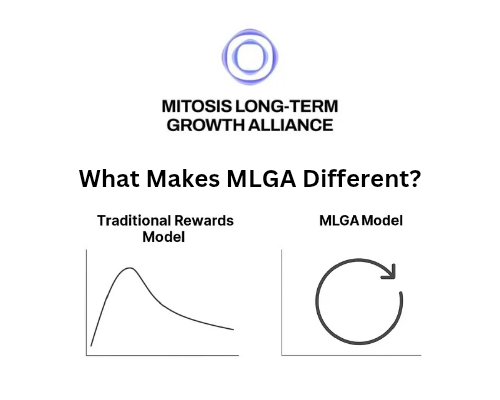Unlocking DeFi Liquidity with Mitosis: Understanding Vanilla, miAssets & maAssets

Introduction
As decentralized finance (DeFi) evolves, Mitosis is redefining liquidity management by introducing new asset types that enhance capital efficiency, yield generation, and interoperability. Among these, Vanilla Assets, miAssets, and maAssets serve as key building blocks within the Mitosis ecosystem, enabling a more efficient and interconnected DeFi experience.
This article explores their roles, mechanisms, and why they are essential for shaping the future of DeFi through Mitosis.

1. Vanilla Assets: The Foundation of DeFi
The term vanilla asset refers to a standard, unmodified asset that maintains its original properties without additional features. These assets are fundamental in DeFi, serving as the base layer for trading, lending, and staking.
Examples include:
- ETH (Ethereum): The primary asset powering the Ethereum network.
- BTC (Bitcoin): The first cryptocurrency, recognized as digital gold and a store of value.
- USDC (USD Coin): A stablecoin pegged to the U.S. dollar for price stability.
When users deposit assets into Mitosis Vaults, these assets are represented as Vanilla Assets on the Mitosis Chain. This enables them to be used across Mitosis's liquidity frameworks (EOL, Matrix) while maintaining their 1:1 backing.

2. miAssets (Mitosis Assets): Unlocking Cross-Chain Liquidity
miAssets are governance-driven assets issued within the Ecosystem-Owned Liquidity (EOL) framework of Mitosis. They are minted when users supply Vanilla Assets to EOL Vaults, representing their stake in the collectively managed liquidity. These tokens maintain a 1:1 peg to their underlying assets and can be used in DeFi applications without withdrawing the original deposits.
How miAssets Work
- Cross-Chain Interoperability: miAssets enable seamless liquidity transfer between different blockchain networks.
- Governance & Yield: miAssets grant holders economic rights to underlying liquidity as well as voting power over EOL’s asset allocation strategies.
- Flexible Liquidity Provision: Holders can utilize miAssets across DeFi protocols while maintaining the ability to redeem their original assets.
By enhancing liquidity mobility, miAssets reduce fragmentation and enable a more interconnected DeFi ecosystem.

3. maAssets (Matrix Assets): Programmable Yield Assets
maAssets are campaign-specific assets within Matrix Vaults, a framework that allows liquidity providers to engage in curated liquidity campaigns where assets are locked for defined periods in exchange for preferential yields. This sophisticated liquidity management system balances yield generation with flexibility. These assets generate passive income by dynamically reallocating liquidity based on market conditions.
How maAssets Work
- Automated Yield Strategies: maAssets optimize returns by leveraging DeFi opportunities such as lending, staking, and trading fees.
- Campaign-Based Liquidity: maAssets are issued when users commit assets to time-bound liquidity campaigns in Matrix Vaults. These assets track deposits and rewards but are not interchangeable across campaigns. Unlike traditional vaults that impose hard lockups, Matrix Vaults allow users to withdraw their assets at any time. However, withdrawing early results in forfeited rewards, which are redistributed among long-term participants, aligning incentives for sustainable liquidity provision.
- Adaptive Liquidity Allocation: Matrix Vaults dynamically reallocate maAsset liquidity across DeFi strategies, ensuring optimal yield distribution while minimizing risks for long-term participants.
- Governance Mechanisms: Matrix Vaults integrate governance models that allow maAsset holders to influence protocol decisions, ensuring that liquidity provisioning remains aligned with the broader DeFi ecosystem.
Unlike miAssets, which operate under a governance-driven allocation model, maAssets cater to liquidity providers who seek structured yield opportunities within predefined time frames.
Why These Assets Matter
Mitosis plays a crucial role in optimizing liquidity across DeFi by introducing these asset types. Understanding their impact is essential for navigating DeFi effectively:
- Enhanced Liquidity: miAssets and maAssets facilitate seamless asset movement across chains.
- Passive Income Generation: maAssets provide optimized yield without requiring active management.
- Interoperability: miAssets connect fragmented liquidity pools, improving capital efficiency.
- Strategic Liquidity Management: Matrix Vaults enable better liquidity planning for protocols and users alike.
Conclusion
As DeFi continues to expand, asset innovation plays a critical role in shaping the ecosystem. Vanilla assets serve as the base layer, miAssets enable cross-chain liquidity, and maAssets optimize yield generation. By leveraging Mitosis and its innovative liquidity frameworks, investors and liquidity providers can optimize their capital efficiency, participate in governance-driven asset allocation, and take advantage of structured yield opportunities within the DeFi ecosystem.
Disclaimer
I am not a financial advisor. The content shared here is for informational and educational purposes only and does not constitute financial, legal, or investment advice. Cryptocurrency investments carry risks, including potential loss of principal. Always do your own research and consult with a professional advisor before making any investment decisions.
Author: Rob_inwoods

Useful links


Comments ()